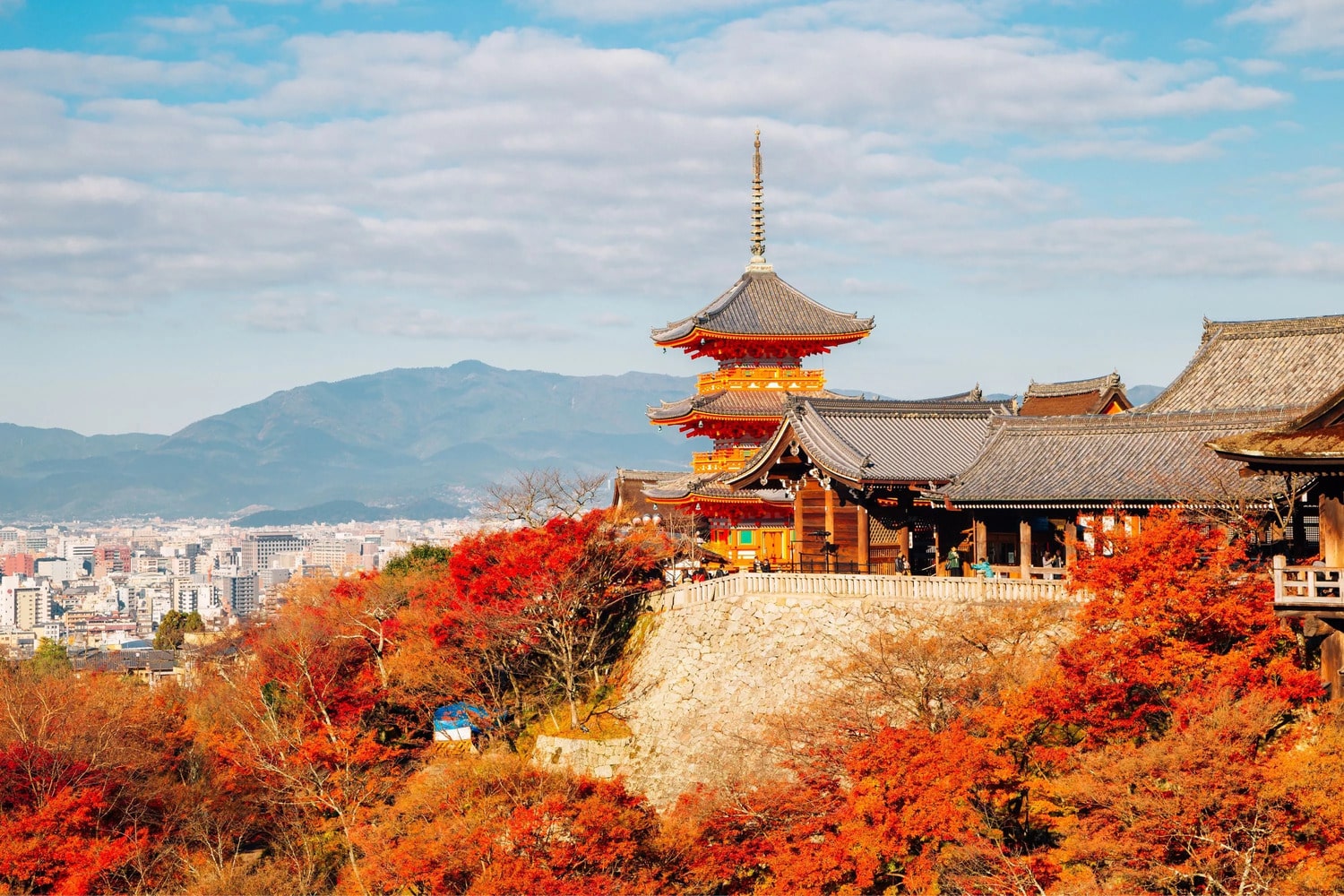Kyoto is a city that has preserved Japan’s history and unique cultural heritage for centuries. Here, ancient traditions blend harmoniously with modern lifestyles, creating an unmatched atmosphere. Kyoto is famous for its temples, gardens, and tea ceremonies, with every street breathing the spirit of the past. The city has become a symbol of Japanese spirituality and refinement, attracting millions of visitors each year. Here is a collection of interesting facts about this exceptional jewel of Japan.
- Kyoto was the capital of Japan for over a thousand years. From 794 to 1868, emperors ruled the country from here, and the city remained the political and cultural center. Even after the capital was moved to Tokyo, Kyoto never lost its significance.
- The city is home to over 1,600 Buddhist temples and around 400 Shinto shrines. This makes Kyoto one of the cities with the richest religious heritage in the world. Many of these sites are included in the UNESCO World Heritage list.
- Kyoto is famous for its traditional Japanese gardens, where every element is carefully planned. These gardens are created with the idea of harmony between nature and humans, using stones, water, moss, and trees. Their appearance changes beautifully with the seasons.
- One of the city’s main attractions is Kinkaku-ji, known as the Golden Pavilion. Its upper floors are covered in real gold leaf, which shines brightly in the sunlight. The temple is surrounded by a stunning garden and reflects in the surface of a pond.
- Another iconic place is Fushimi Inari Shrine, famous for its thousands of red torii gates. These gates symbolize the transition into a sacred space, and their sheer number leaves a strong impression. The path between them leads up Mount Inari.
- Kyoto is the birthplace of the art of geisha. In the Gion district, you can see geisha and maiko, or apprentice geisha, dressed in traditional kimonos. This art form has survived to the present day and remains an important part of the city’s cultural life.
- In Kyoto, the tea ceremony holds a special place, as it is home to schools of master tea practitioners. The ceremony symbolizes respect, purity, and tranquility. It is held in specially designed tea houses and gardens.
- The city is a major center for kimono production. Local fabrics, decorated with traditional patterns, are considered true works of art. Kimonos from Kyoto are highly valued both in Japan and abroad.
- Kyoto is known for the Gion Matsuri festival, held every year in July. It is one of the oldest and most famous festivals in Japan, lasting for the entire month. The highlight is the grand parade of enormous, elaborately decorated floats.
- In Kyoto, you can taste traditional Japanese sweets called wagashi, made from natural ingredients. They often take the shape of flowers or seasonal symbols and are served during tea ceremonies. They reflect the aesthetics of Japanese culture.
- One of the city’s landmarks is the Philosopher’s Path, lined with cherry trees. It runs along a canal, and in spring, when the sakura blossoms, it becomes one of the most popular walking spots. The name comes from a Japanese philosopher who used to walk there daily.
- In Kyoto, people speak the Kyoto-ben dialect, which differs from standard Japanese. It is characterized by politeness and a melodic tone, reflecting the cultural refinement of the city.
- The city has preserved traditional wooden townhouses called machiya. They serve as shops, restaurants, or residences, and their architecture reflects the classical Japanese style.
- In autumn, Kyoto glows with the red and gold of maple leaves, a phenomenon called momiji. Tourists from all over Japan come to admire this natural beauty.
- The city is known for its traditional Japanese pickles called tsukemono. They are made from vegetables marinated in salt, vinegar, or miso. They are an essential part of local cuisine.
- Kyoto is home to one of the oldest universities in Japan – Kyoto University. It is famous for its academic achievements and for producing many Nobel Prize laureates.
- A special element of Kyoto cuisine is kaiseki, a multi-course meal. It combines aesthetics and seasonality, with each dish prepared with great attention to detail.
- Kyoto is also famous for its traditional fan-making craft. These fans are valued for their delicacy and high quality and are used in dance and tea ceremonies.
Kyoto is a city of rich cultural heritage, stunning nature, and deep respect for tradition. Here you can find peace among temples, feel the rhythm of festivals, and enjoy harmony with nature. These fascinating facts show why Kyoto is called the heart of Japan, beating in time with both history and modern life.





